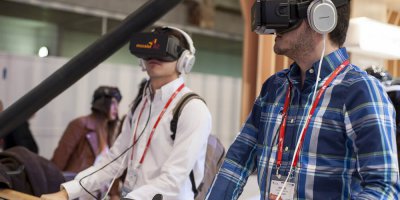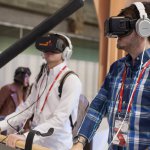
Luxury fashion retail platform BlinQ is deploying emerging technology to enhance customer experience. Source: BlinQ
Does AR really have the potential to transform online fashion retail?
TECHNOLOGY has disrupted industries across Southeast Asia, and the retail industry, in particular, is undergoing massive transformation, thanks in part to the rise of e-commerce in the last decade or so.
According to a 2018 Google-Temasek report, there are about 120 million shoppers in the region opting for e-commerce platforms as opposed to only 50 million in 2015.
Further, the increased connectivity and internet penetration have made consumers in these parts to be more discerning, and they are demanding richer retail experience – both online and offline.
But, one retailer poised to deliver exactly that. Understanding that the shift towards ‘new retail’ requires data-driven, customer-centric approach, fashion retail app BlinQ deploys emerging technologies throughout its entire value chain, enhance its customer experience while solving problems inherent to online retail.
Tech Wire Asia spoke to BlinQ’s Founder and CEO, Bob Chua to understand how the platform leverages technology to serve its customer better.
“BlinQ is a luxury fashion platform that is uniquely founded upon the three pillars of Augmented Reality (AR), mobile commerce and automated logistics,” said Chua.
He explained that the fashion industry has a notoriously high rate of returns, which is estimated at 30 percent and could go up to 70 percent during peak season, which poses costly logistical challenges for brands within this space.
And to remedy the issue, BlinQ has invested heavily in AR, which will allow users to virtually try-on any outfit before purchasing at the convenience of their homes using their mobile phones.
“A virtual fitting application, powered by digital cameras, allows BlinQ to measure customer body parameters and make sizing recommendations.
“Customers can now comfortably try on clothing at home without a need to undress and confidently purchase clothing that would fit them,” explained Chua.
Enhanced mobile commerce, logistics
Unlike most e-commerce platforms, customers shopping via BlinQ have the option to rent the items from its catalog or sign up for a subscription service, where items that are trending will be curated specifically for individual customers, in addition to its regular purchasing option.
“Furthermore, the marketplace would also provide flash sales and pre-loved options as well,” Chua said.
And to ensure enhanced, frictionless customer experience throughout the shoppers’ journey, Blinq deploys and heavily relies on its automated logistics and warehouse features.
“This important back-end function allows for our products and SKUs to get to the right customers at the right time. This creates a superior user experience,” Chua clarified.
He added, “From the back-end fulfillment perspective, we are investing in a very sophisticated automated logistics fulfillment center which can handle regional fulfillment of luxury products throughout Southeast Asia from a central location.
Data-centric and consumer-focused
With extensive experience in big data analytics and consumer behavior, Chua considers luxury fashion Southeast Asia is a huge, untapped market which much like every other industry could be unlocked using technology.
“Regardless of what industry we are serving, I truly believe that we first need to understand the fast-changing technological trends, buying behavior, and where the industry is moving next.
“All of those ingredients have been well embedded from my past experiences, and we will continue to ensure that data, as well as analytics, is at the forefront of how we will stay ahead of the curve with BlinQ,” said Chua.
For instance, BlinQ has been developing several algorithms which will analyze body measurements and shopping trends, to provide them with real-time insights and enable demand forecasting.
Blinq will launch in Q2 of 2019, and the beta version of the app is currently on Google Play. Chua has recently raised US$2 million as part of its seed round and is preparing the platform for their next fundraising round.
And, as far as integrating more innovative technology to the app, Chua indicated that possibilities are limitless.
“We see ourselves as a technology provider and will continue to push the envelope when it comes to R&D and innovation. This is only the beginning,” he said.
READ MORE
- Strategies for Democratizing GenAI
- The criticality of endpoint management in cybersecurity and operations
- Ethical AI: The renewed importance of safeguarding data and customer privacy in Generative AI applications
- How Japan balances AI-driven opportunities with cybersecurity needs
- Deploying SASE: Benchmarking your approach






